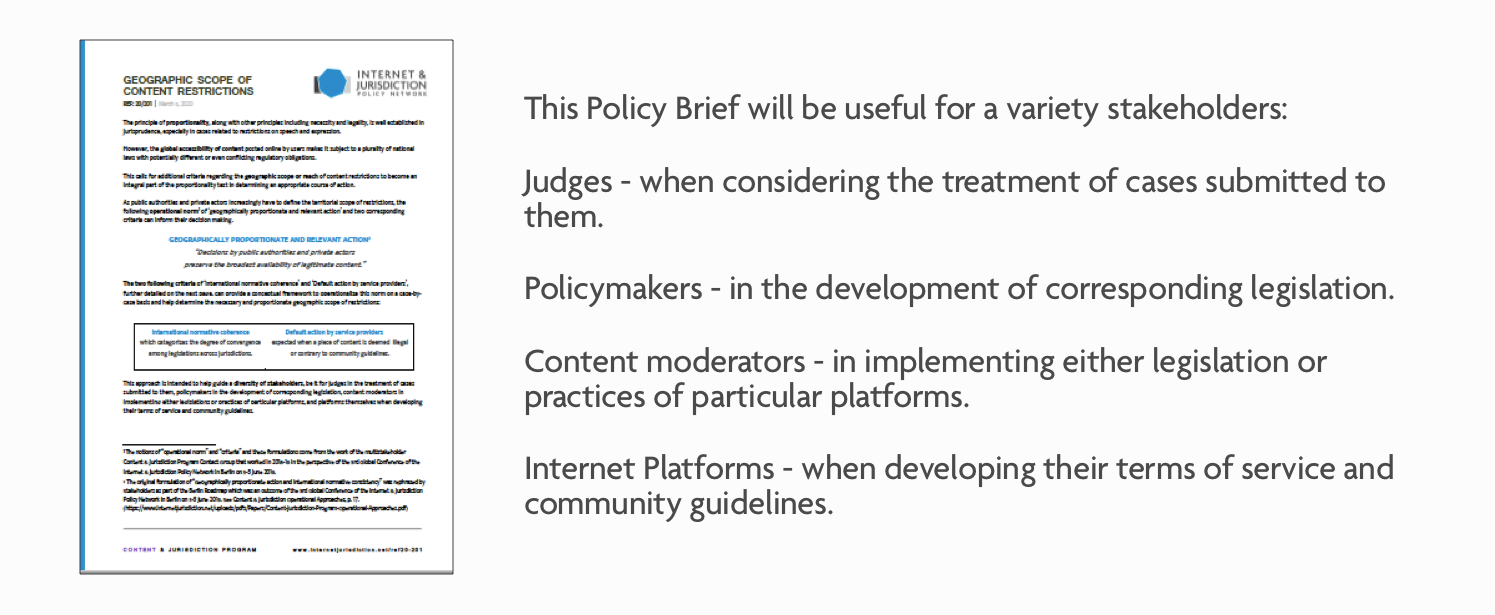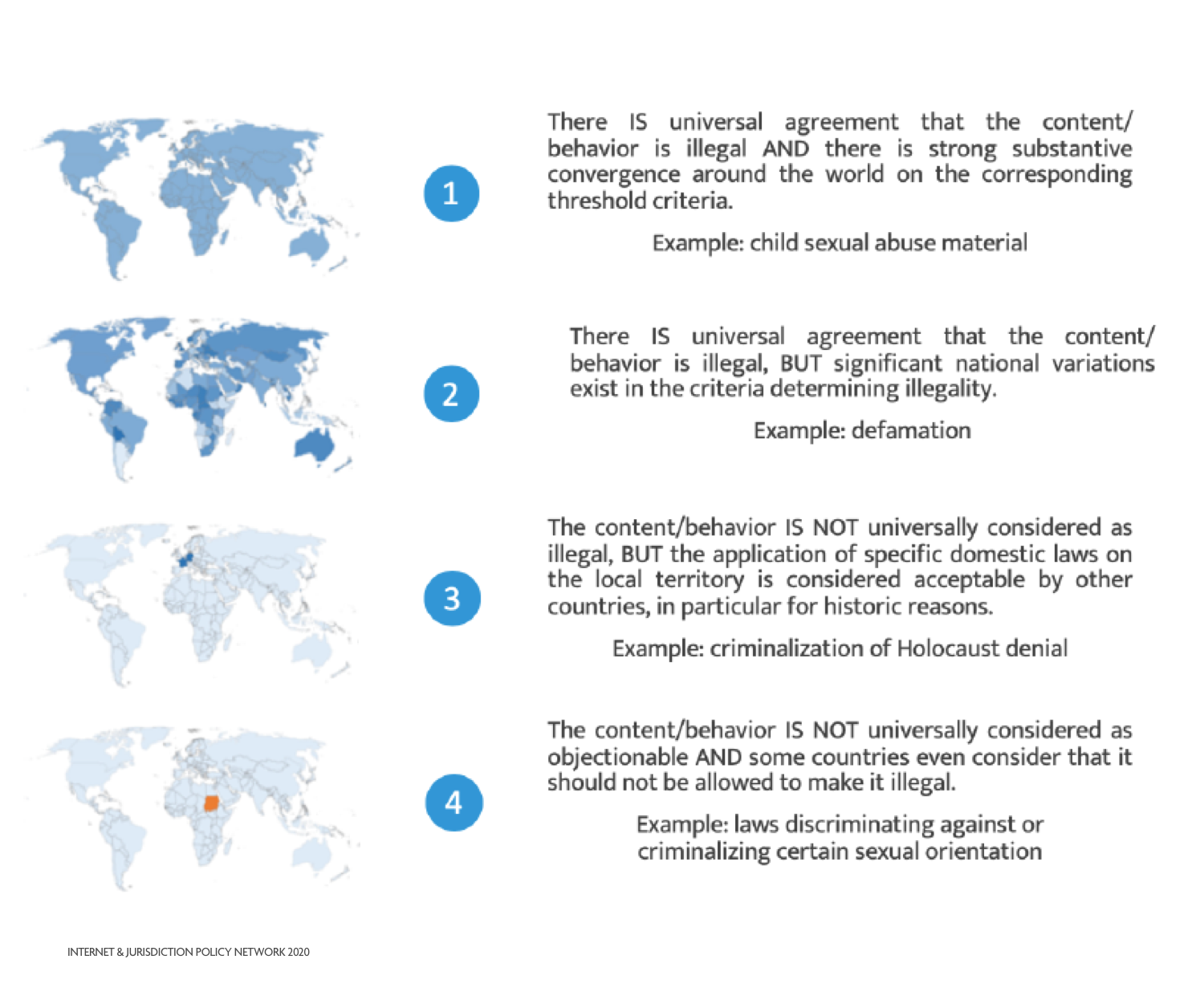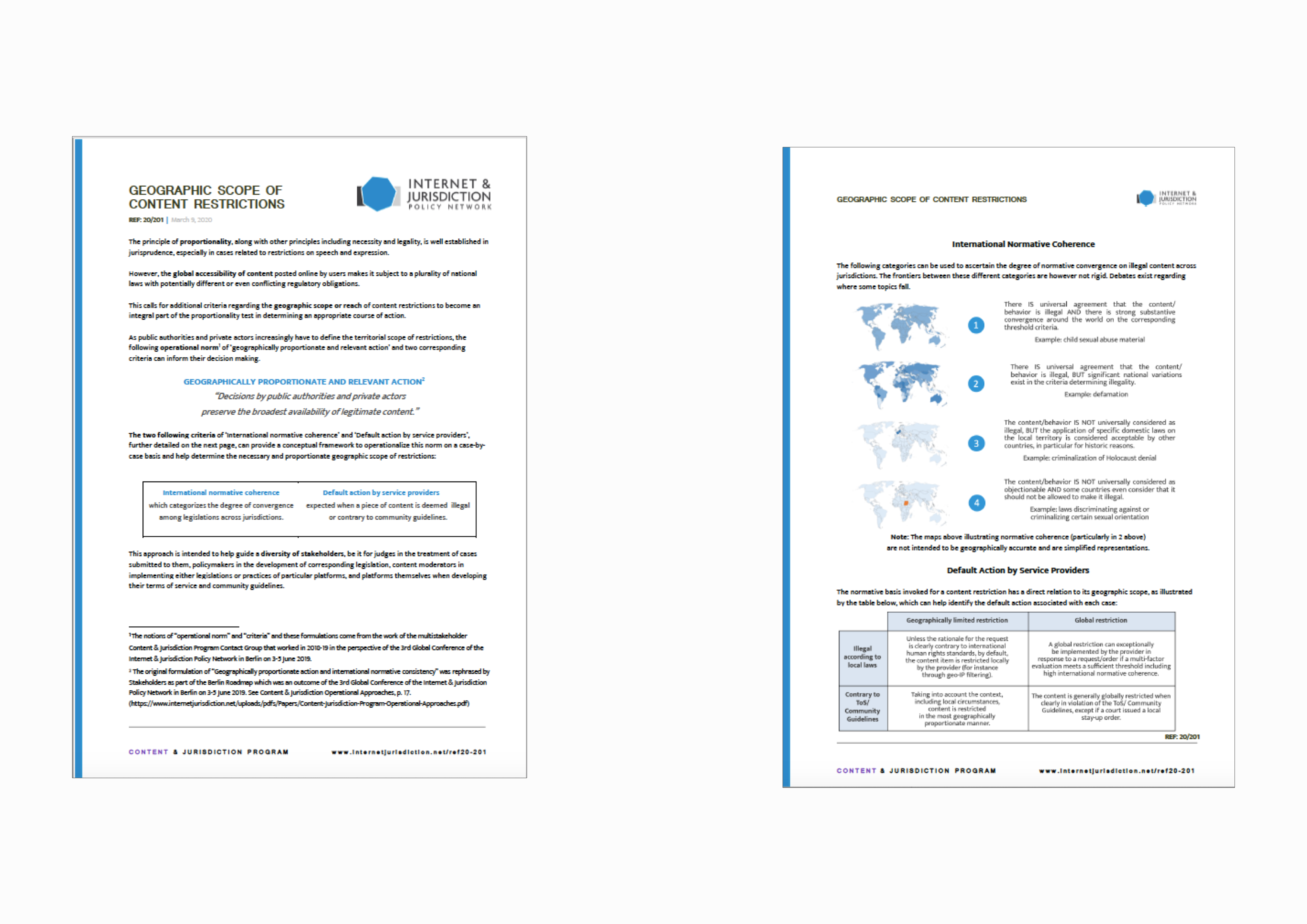Download the new I&J Policy Brief on the Geographic Scope of Content Restrictions.
Every day, millions of messages, posts, comments and other items of content posted online are restricted or deleted. Decisions to restrict content are mainly based on national laws or service providers’ terms of service. While in some cases it may be appropriate that the content restrictions are global, in many cases it might not. Therefore in addition to the considerations and tests prescribed by human rights law and jurisprudence, this calls for an additional assessment of the proportionality of the geographical scope of such decisions.
The Internet & Jurisdiction Policy Network has prepared a Policy Brief (I&J Ref: 20-102) to assist public and private decision-makers on determining the Geographic Scope of Content Restrictions.
A key objective of our work is to preserve the global internet and minimise content restrictions imposed by different jurisdictions. The proportionality test of the geographic reach of any decision restricting content is needed if we want to preserve the greatest availability of content online.
Wolfgang Schulz, Director of the Alexander von Humboldt Institute for Internet and Society and Coordinator of the Content & Jurisdiction Program Contact Group
National laws about illegal content vary widely from country to country. Some countries have national laws barring expression that is protected under international human rights standards. At the same time, internet service providers have terms of service and/or community guidelines that generally apply to the entirety of their services irrespective of users’ nationality or location.
Different jurisdictions do not impose on others their views on what is legal or permissible offline, therefore they should not by default impose their views globally online. Our multi-stakeholder consultations have resulted in developing the operational norm of geographic proportionality that helps to determine the necessary and proportionate geographic scope of content restrictions.
Frane Maroevic, Director, Content & Jurisdiction Program
The varying approaches to content restrictions and diverse actors involved in decision-making, create a complex landscape where content restriction decisions can be global by default. The I&J Policy Brief (I&J Ref: 20-102) presents an operational norm on ‘geographically proportionate and relevant action’ and two corresponding criteria that need to be considered when assessing the geographic scope of content restrictions:
1) International normative coherence: Categorizes the degree of convergence among legislations across jurisdictions.
2) Default action by service providers: Taken when a piece of content is deemed illegal or contrary to community guidelines.
Examples of international normative coherence:
The Internet & Jurisdiction Policy Network will continue working on further developing the multi-factor criteria for the evaluation of the appropriate scope of action.
Note: The maps above illustrating normative coherence (particularly in 2 above) are not intended to be geographically accurate and are simplified representations.
The I&J Policy Brief (I&J Ref: 20-102) builds on the outcome of the work of Members of the Internet & Jurisdiction Policy Network’s Content & Jurisdiction Program Contact Group, where over 30 senior-level Members from governments, internet companies, technical operators, civil society, leading universities and international organizations from around the world work together to develop voluntary policy standards (see list of Members below). In 2019, the Members developed a set of Operational Approaches that provide stakeholders with common Norms, Criteria and Mechanisms regarding content moderation and restrictions.
The Internet & Jurisdiction Policy Network is the multistakeholder organization addressing the tension between the cross-border Internet and national jurisdictions. It engages over 300 entities from governments, the world’s largest internet companies, technical operators, civil society groups, academia and international organizations from over 50 countries.
Meet the members of the Content & Jurisdiction Program Contact Group.






